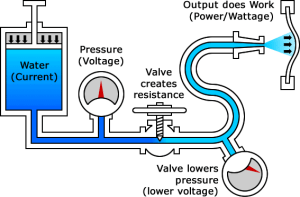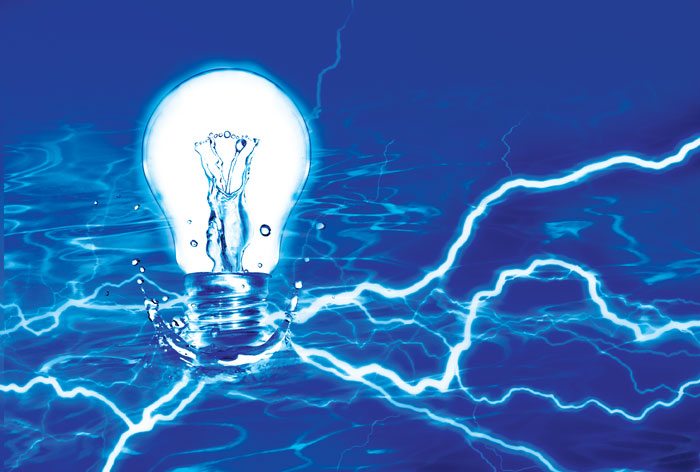We now know about basic electrical theory (if you missed our prior blogs read about Basic Electrical Theory and Amps, Volts, Resistance Oh My here) so lets put this all into an analogy we can all understand. We are going to compare electrical theory with plumbing- Yes, we know that electricity and water don’t mix, but we think this will help hit the concept home!
Voltage= the pressure of water
Amperage = the flow rate of the water
Resistance = the size of the pipe the water is flowing through
Wattage = the total number of gallons of water used
Amperage = the flow rate of the water
Resistance = the size of the pipe the water is flowing through
Wattage = the total number of gallons of water used

There is a basic equation in electrical engineering that states how the three terms relate: A = W/V. Now lets say you have a tank of pressurized water connected to a hose that you’re using to water the garden. If you increase the pressure to the tank, more water will come out of the hose- the same is true for electricity: increasing the voltage will make more current flow.
Now lets say you increase the diameter of the hose and all the fittings in the tank. This will also make more water come out of the hose. This is like decreasing the resistance in an electrical system, which will increase the current flow.
Remember Ohm’s Law? In a linear circuit states that if we increase the voltage, the current goes up and if we increase the resistan










